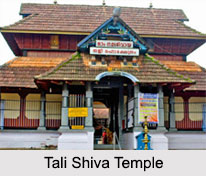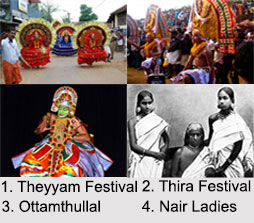 Culture of Kozhikode is loaded with a number of communities. It is a city situated in the southern Indian state of Kerala. The cultural history of Kozhikode has much to offer to one`s salver of interests to find out more about this ancient city. It was the capital of an independent kingdom ruled by the "Samoothiris" in Middle Ages and later of the erstwhile Malabar District under British law.
Culture of Kozhikode is loaded with a number of communities. It is a city situated in the southern Indian state of Kerala. The cultural history of Kozhikode has much to offer to one`s salver of interests to find out more about this ancient city. It was the capital of an independent kingdom ruled by the "Samoothiris" in Middle Ages and later of the erstwhile Malabar District under British law.
Culture of Kozhikode
Kozhikode has been a cultural and multi religious city since the establishment of medieval period. The Culture and Traditions of Kozhikode are very wealthy. A lot of temples have related to the vision - "Velichappad". Many places have temples with the local deities, more often a Goddess. The Hindus form the most important religious group, trailed by Muslims and Christians. Malayalam is the most spoken language.
 Festivals like "Theyyam", "Thira" and other art forms like "Ottamthullal", "Kathakali" are performed here in all the stages exhibited to the temple parklands. A number of Brahmins live in the city, chiefly around the Hindu temples. The Tamil Brahmins are for the most part settled around the Tali Shiva temple. They land in Kozhikode as charges of chieftains, working as cooks, cloth merchants and moneylenders. Most of the communities follow their traditional livelihoods and customs till the 20th century. These festivals contains "Kosavan", "Vannan", "Pulayan", "Chaliyan", "Chetti", "Thiyya", "Ganaka", "Vettuvan", "Paanan", "Eravallan", "Kammalas", "Parayan" etc.
Festivals like "Theyyam", "Thira" and other art forms like "Ottamthullal", "Kathakali" are performed here in all the stages exhibited to the temple parklands. A number of Brahmins live in the city, chiefly around the Hindu temples. The Tamil Brahmins are for the most part settled around the Tali Shiva temple. They land in Kozhikode as charges of chieftains, working as cooks, cloth merchants and moneylenders. Most of the communities follow their traditional livelihoods and customs till the 20th century. These festivals contains "Kosavan", "Vannan", "Pulayan", "Chaliyan", "Chetti", "Thiyya", "Ganaka", "Vettuvan", "Paanan", "Eravallan", "Kammalas", "Parayan" etc.
The Nairs figured the rulers, warriors and landed gentry of Kozhikode. Local groups like the Tamil Brahmins, Gujaratis and Marwari Jains became a part of the city at a variety of periods and lived around their holy places. People have preserved their Tamil language very well with the dialects as well as caste traditions. The Gujarati community is settled primarily in the region of the Jain temple in and around Valliyangadi.
The Mappila community of Kozhikode proceeded as a significant hold up base for the city`s martial, economic and political affairs. They were inhabited first and foremost in Kuttichira and Idiyangara. Their upper-class lodging houses were like to the houses of the Nairs and the Thiyyas. The Thiyyas formed the vaidyars, local armed force and traders of Kozhikode. A few Marwari families are also found in Kozhikode, principally the moneylenders.



















